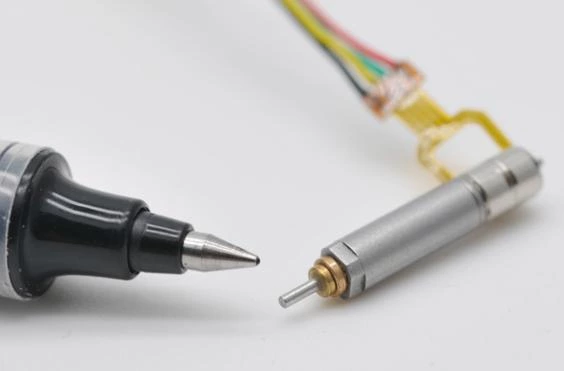4 Ways to Control DC Motor Speed
DC motor speed control is a useful feature for motors. By controlling the speed of the motor, you can vary the speed of the motor according to the requirements and achieve the operation you want. This achieves both reduction and an increase of the motor speed. Here, we’ve outlined 4 ways to achieve this effect for reduction purposes.
Based on the way a DC motor works, four facts can be confirmed:
- Speed of the motor is determined by the speed controller;
- Speed of the motor is directly proportional to supply voltage;
- Speed of the motor is inversely proportional to armature voltage drop;
- Speed of the motor is inversely proportional to the flux due to the field findings.
DC motor speed can be controlled in four ways:
- By adding a DC motor controller;
- By varying the supply voltage;
- By varying the armature voltage, and by varying the armature resistance;
- By varying the flux, and by varying the current through field winding.
4 Methods for Controlling DC Motor Speed
1. Adding a DC Speed Controller
1.A gearbox — otherwise known as a gear reducer or speed reducer — is a set of gears that can be added to a motor to drastically decrease output speed and/or increase torque. Speed reduction is determined by the gear ratio and efficiency of the gearbox, which works as a DC motor controller.
How to achieve DC motor control?
ZHAOWEI drives with an integrated speed controller combine the advantages of DC motors and their electronic control. Controller parameters and the operating mode can be adjusted via motion manager. Depending on the desired speed range, the rotor position is detected digitally or optionally available analog Hall sensors. This means that speed control settings can be configured in combination with motion manager via programming adapters. When it comes to micro electric motors, there are a series of DC motor controllers according to voltage supply on the market that can alter the motor speed. These controllers include the 12V DC motor speed controller, 24V DC motor speed controller, 6V DC motor speed controller, etc.

2. Voltage Control Method
2.Electric motors are characterized by their variety, ranging from fractional horsepower units for small appliances to motors with thousands of hp for heavy industrial use. The speed of an electric motor is also determined by its physical construction and the frequency of the voltage supply. Setting the load aside, the speed of a motor is proportional to the supply voltage. Therefore, if the voltage decreases, the speed of the motor will decrease accordingly. Electrical engineers select motor speed based on the needs of each usage, similar to how horsepower is specified based on the mechanical load.
3. Armature Voltage Control
3.This speed control method is used only for small motors. In this method, field winding is supplied by the constant supply, while armature winding is supplied by a separate variable DC source. With armature voltage control, the DC motor speed can be controlled by adjusting the armature resistance to control the voltage drop across the armature. This method also uses a variable resistor in series with the armature. When the variable resistor reaches its minimum value, the armature resistance is at a normal range, and therefore the armature voltage drops. When the resistance value is gradually increased, the voltage across the armature decreases. This in turn leads to a decrease in the speed of the motor, keeping its speed below the normal range. The downside with the armature control method is that it involves a huge power loss due to its usage of the resistor in series with the armature.
4. Flux Control Method
4.In this method, the magnetic flux due to the field windings is varied in order to vary the speed of the motor. As the magnetic flux depends on the current flowing through the field winding, it can be varied by adjusting the current through the field winding. This can be achieved by using a variable resistor in a series with the field winding resistor. Initially, when the variable resistor is kept at its minimum position, the rated current flows through the field winding due to a rated supply voltage, and as a result, the speed is maintained. When the resistance is gradually decreased, the current through the field winding increases. This, in turn, the flux produced increases and then the speed of the motor decreases below its normal value. This method contributes to DC motor speed control, but this method can have an affect on commutation.
Conclusion
The methods above are only some of the main ways to achieve DC motor speed control. Through comparison, it’s easy to see that adding a micro gearbox as the DC motor controller to reach your ideal speed while selecting a DC motor with a suitable voltage supply one of the most convenient and cost-effective methods.
















